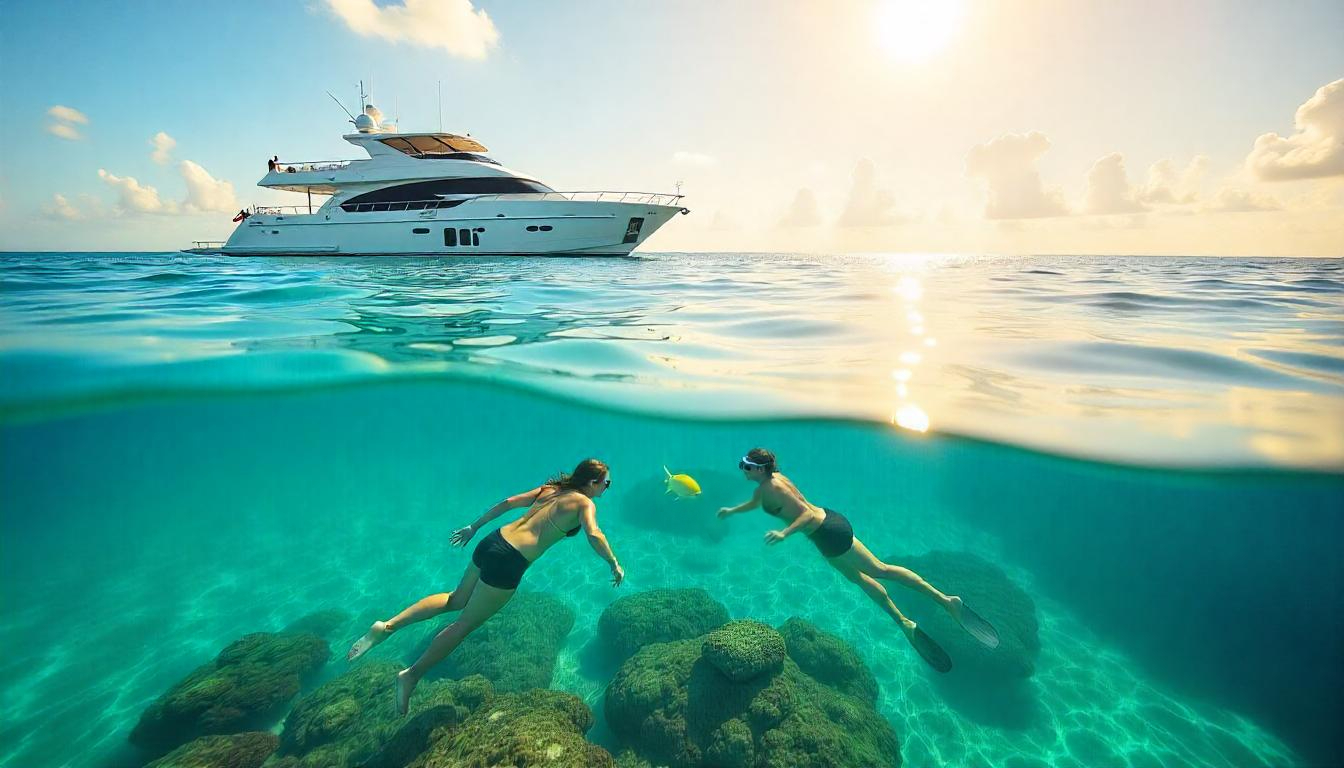Timing can transform a yachting trip into a seamless adventure, and knowing the right time yachting regions is key to ensuring optimal weather, manageable winds, and vibrant local experiences in 2025. Whether you’re dreaming of the Mediterranean’s azure waters, the Caribbean’s tropical allure, or the Pacific Northwest’s rugged fjords, each region has its own seasonal rhythm that impacts sailing conditions. In this guide, we’ll explore how to choose the right time yachting regions, detailing the best seasons for top destinations, weather patterns, and practical tips to help you plan a safe and enjoyable voyage.
Why the Right Time Yachting Regions Matters
Selecting the right time yachting regions is crucial because weather, sea conditions, and local events vary widely across the globe, directly influencing your sailing experience. For starters, sailing during peak storm seasons—like the Atlantic hurricane season in the Caribbean—can mean facing 25-knot winds and 3-meter swells, posing risks for even experienced sailors. Moreover, peak tourist seasons in regions like the Mediterranean can lead to overcrowded marinas, with mooring fees in places like Capri soaring to $150 per night in July. Consequently, picking the right time yachting regions ensures safer sailing, fewer crowds, and a more pleasant journey overall.
How Seasons Affect Yachting Conditions
Seasons play a significant role in yachting conditions. For instance, summer in the Mediterranean offers 30°C temperatures and 5-10 knot breezes, perfect for relaxed sailing, but it also brings heavy tourist traffic. In contrast, winter in the Caribbean, such as January, provides 28°C highs and 15-knot trade winds, ideal for island-hopping, with minimal rainfall. Transitioning to wildlife, timing your trip for migrations—like humpback whales in the Pacific Northwest from May to September—adds a natural spectacle to your journey. Also, local events, such as the Cannes Film Festival in May, can enhance your Mediterranean trip with free yacht-watching opportunities. Thus, understanding seasonal patterns is essential for a well-timed yachting adventure.
The Mediterranean: Timing for Right Time Yachting Regions
The Mediterranean, with its historic ports and stunning coastlines from Italy to Croatia, requires careful timing to find the right time yachting regions for a smooth sailing experience. The best months are May to June and September to October—temperatures range from 22°C to 28°C, winds are manageable at 5-15 knots, and anchorages are less crowded than in peak summer. For example, in June, you can anchor off Dubrovnik for free in 5-meter depths, enjoying 26°C waters for swimming, while August sees 34°C heat and packed marinas with $130 nightly fees.
Mediterranean Sailing Seasons
Mediterranean seasons offer distinct sailing conditions. For instance, May in the Amalfi Coast brings 24°C highs and 10-knot winds, ideal for sailing 5-nautical-mile legs, like Positano to Amalfi, with 25-meter visibility for snorkeling. However, July and August bring the Meltemi wind in the Aegean, with gusts up to 30 knots—challenging for novices, so stick to the calmer Ionian Sea, like Corfu, instead. Transitioning to events, September in Monaco hosts the Monaco Yacht Show, with free viewing of superyachts, adding glamour to your trip. Also, October in Sardinia offers 22°C temperatures and fewer tourists, making anchorages like Porto Cervo more accessible. Therefore, spring and early fall provide the best Mediterranean yachting conditions.
The Caribbean: Choosing the Right Time Yachting Regions
The Caribbean’s 7,000 islands make it a yachting paradise, but selecting the right time yachting regions avoids storms and ensures pleasant sailing. The optimal period is December to May—the dry season brings 10-15 knot trade winds, 29°C temperatures, and low rainfall, perfect for exploring. For example, in February, you can sail from Antigua to Barbuda, a 10-nautical-mile trip, anchoring for free off Low Bay with 30-meter visibility for snorkeling among coral reefs and sea turtles.
Caribbean Seasonal Conditions
The Caribbean’s seasons shape your experience. For instance, January in the Grenadines offers 28°C highs and 15-knot breezes, ideal for sailing to Tobago Cays and anchoring in 5-meter depths for free, with fewer yachts than March. However, June to November is hurricane season—storms can bring 30-knot winds and heavy rain, so it’s best to avoid this period unless you’re prepared for rough conditions. Transitioning to culture, April in Antigua coincides with Sailing Week, a free regatta event with races and beach parties, adding excitement to your journey. Also, December in the Bahamas provides 27°C waters and 10-knot winds, perfect for exploring the Exumas’ deserted cays. Thus, the dry season offers the safest and most enjoyable Caribbean yachting.
The Pacific Northwest: Best Right Time Yachting Regions
The Pacific Northwest, including the San Juan Islands and British Columbia’s Desolation Sound, offers a rugged yachting escape, and finding the right time yachting regions ensures calm waters and wildlife sightings. The best time is June to September—temperatures average 20°C, winds are 5-10 knots, and rainfall is minimal compared to winter. For example, in July, you can anchor in Friday Harbor in the San Juan Islands for free in 7-meter depths, kayaking in 18°C waters to spot orcas, with a 70% sighting chance during summer.
Pacific Northwest Sailing Seasons
The Pacific Northwest’s seasons impact yachting conditions. For instance, August in Desolation Sound offers 22°C highs and 10-knot winds, ideal for sailing 5 nautical miles to Prideaux Haven, anchoring for free to swim in 20°C waters heated by tidal pools. However, November to March brings heavy rain and 20-knot storms, making navigation challenging, especially in narrow channels like the Strait of Georgia. Transitioning to wildlife, June in the San Juan Islands coincides with orca migrations, with pods of 20 whales often spotted during a 3-nautical-mile sail, costing nothing to witness. Also, September in British Columbia offers 18°C temperatures and calm seas, perfect for exploring the fjords of Princess Louisa Inlet. Therefore, summer is the best time for Pacific Northwest yachting.

Practical Tips for Right Time Yachting Regions
A few practical tips can help you choose the right time yachting regions for a smooth sailing experience. First, monitor weather forecasts—apps like Windy, free to use, provide wind and wave data, helping you avoid 20-knot storms in regions like the Caribbean. Next, plan for shoulder seasons—sailing in May in the Mediterranean or April in the Caribbean offers milder weather and lower mooring fees, dropping to $40 per night in marinas like St. Martin. Also, check for local events—festivals like the Dubrovnik Summer Festival in July, with free concerts, enhance your Mediterranean trip. Transitioning to safety, avoid storm seasons—research historical cyclone data for regions like the Pacific Northwest to steer clear of risky months. Thus, careful timing ensures a safer and more enjoyable journey.
Balancing Weather and Crowds
Balancing weather and crowds is key to timing. For instance, September in the Mediterranean avoids the July heat of 34°C and peak tourist crowds, with 24°C highs and 10-knot winds for smoother sailing. Additionally, December in the Caribbean offers 15-knot trade winds and 28°C temperatures, with fewer sailors than February, making anchorages like Bequia in the Grenadines less crowded. Transitioning to the Pacific Northwest, August in the San Juan Islands provides 20°C highs and 5-knot breezes, with fewer yachts than July, ensuring more space at anchorages like Roche Harbor. Also, avoid peak holiday periods—Christmas in the Caribbean can increase mooring fees to $90 per night in marinas like Tortola. Therefore, timing around weather and crowd levels optimizes your yachting experience.
The Cost of Yachting in Different Seasons
A 7-day yachting trip for four people varies by season and region. In the Mediterranean, a May charter costs $3,200, or $800 per person, for a 40-foot yacht, with mooring fees at $40 per night for three nights in Corfu, totaling $120, and four nights anchoring for free in Dubrovnik. Fuel for 100 nautical miles costs $200, and meals average $15 per person daily, or $420 for four. Total: $3,940, or $985 per person. In the Caribbean, a December charter costs $3,800, with similar mooring and fuel costs, totaling $4,540, or $1,135 per person. In the Pacific Northwest, a July charter costs $3,500, with lower fuel costs for 50 nautical miles at $100, totaling $4,120, or $1,030 per person.
Budget-Saving Tips for Seasonal Yachting
Save by sailing in shoulder seasons—April in the Caribbean drops charters to $3,500, saving $300, and mooring fees decrease to $30 per night. For example, anchoring for free in the Mediterranean in October avoids $120 in mooring fees over four nights. Also, cook onboard—buy fish and bread in the San Juan Islands for $20 for four meals, versus $50 at a restaurant, saving $30 per meal. Transitioning to travel, book flights early—June flights to the Pacific Northwest cost $400 per person, versus $600 in August, saving $200 for four. Moreover, sail shorter distances—5-nautical-mile legs in the Grenadines reduce fuel costs by $50. Thus, strategic timing keeps your yachting trip affordable.
Challenges of Choosing Right Time Yachting Regions
Choosing the right time can present challenges. First, unpredictable weather—late-season storms in the Caribbean, even in May, can bring 20-knot winds, so monitor forecasts closely. Additionally, peak-season crowds in the Mediterranean in August mean busy anchorages—arrive early in Capri, as spots fill by noon. Also, off-season risks in the Pacific Northwest—winter storms in December can bring 25-knot winds, so have a backup plan, like staying near sheltered bays in Desolation Sound. However, these challenges can be managed with preparation.
Overcoming Timing Challenges
Sail in stable months—January in the Caribbean ensures 10-15 knot winds, avoiding hurricane risks. For crowds, visit less-touristy spots—Ithaca in the Mediterranean in September is quieter than Mykonos, with more anchoring space. Transitioning to weather, carry a satellite phone—models costing $100 ensure communication in remote Pacific Northwest areas during stormy seasons. Moreover, plan flexible routes—have alternative anchorages, like the Grenadines, if a storm hits the Bahamas. Therefore, preparation helps you navigate timing challenges effectively.
Why Choose the Right Time Yachting Regions?
Choosing the right time yachting regions ensures a safer and more enjoyable sailing experience, with ideal weather, fewer crowds, and unique local experiences, from the Mediterranean’s spring calm to the Caribbean’s winter warmth. Timing impacts everything—wind patterns, water temperatures, and even cultural events. Whether you’re sailing in the Pacific Northwest’s summer or the Mediterranean’s fall, the right timing enhances your journey. For a seamless yachting adventure, timing is critical. Therefore, selecting the right time yachting regions sets the stage for a memorable trip.
A Well-Timed Yachting Journey
Every region offers seasonal advantages. For instance, sailing in June in the Mediterranean means milder weather and fewer tourists. Or, February in the Caribbean brings perfect sailing conditions and vibrant festivals. This variety ensures a tailored trip. Thus, choosing the right time yachting regions creates a journey you’ll cherish.
Final Thoughts on Timing Your Yachting Adventures
Choosing the right time of year for yachting in different regions of the world can elevate your sailing experience, ensuring optimal conditions, fewer crowds, and a deeper connection to each destination, from the Mediterranean to the Pacific Northwest. With careful planning, an understanding of seasonal rhythms, and a passion for exploration, you’ll create a yachting trip that’s both thrilling and rejuvenating. So, pick your season, set sail, and let the world’s waters guide you—one voyage at a time.

 Como escolher a altura do ano certa para andar de iate em diferentes regiões do mundo">
Como escolher a altura do ano certa para andar de iate em diferentes regiões do mundo">
